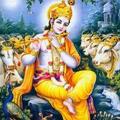Question Text
Question 1 :
x$\;and\;\displaystyle\frac{8}{9}$ are the additive inverse of each other.Then the value of  x is<br/>
Question 4 :
A student divided a number by two when he was required to multiply it by 2. The answer he got was 2. The correct answer should have been
Question 6 :
There are 50 numbers Each numbers is subtracted from 53 and the mean of the numbers so obtained is found to be -3.5 The mean of the given numbers is
Question 7 :
An illustration of the associative law for multiplication is given by
Question 8 :
Which of these is true?<br/>$(I)$ $5\sqrt {3}$ is not a rational number<br/>$(II)$ $1$ is not the cube of a rational number<br/>$(III)$ If a is rational and $n$ is an integer greater than $1$, then ${a}^{n}$ is rational.<br/>
Question 9 :
If,A : The quotient of two integers is always a rational numbers.R: $\displaystyle \frac{1}{0}$ is not rational, then which of the following statements is true?
Question 10 :
If p: All integers are rational numbers andq: Every rational number is an integer, then which of the following statement is correct?
Question 11 :
$G$ is a set of all rational numbers except $-1$ and $\ast $ is defined by $a\ast b=a+b+ab$ for all $a,b\in G$, in the group $\left( G,\ast \right) $, the solution of ${ 2 }^{ -1 }\ast x\ast { 3 }^{ -1 }=5$ is
Question 12 :
For any two real number, an operation defined by $a* b= 1 +ab$ is.<br/>
Question 15 :
The value of $2\dfrac {1}{2} \times 10 - 4\dfrac {1}{3} \times 10$ is






















